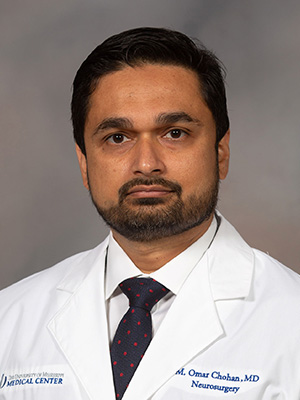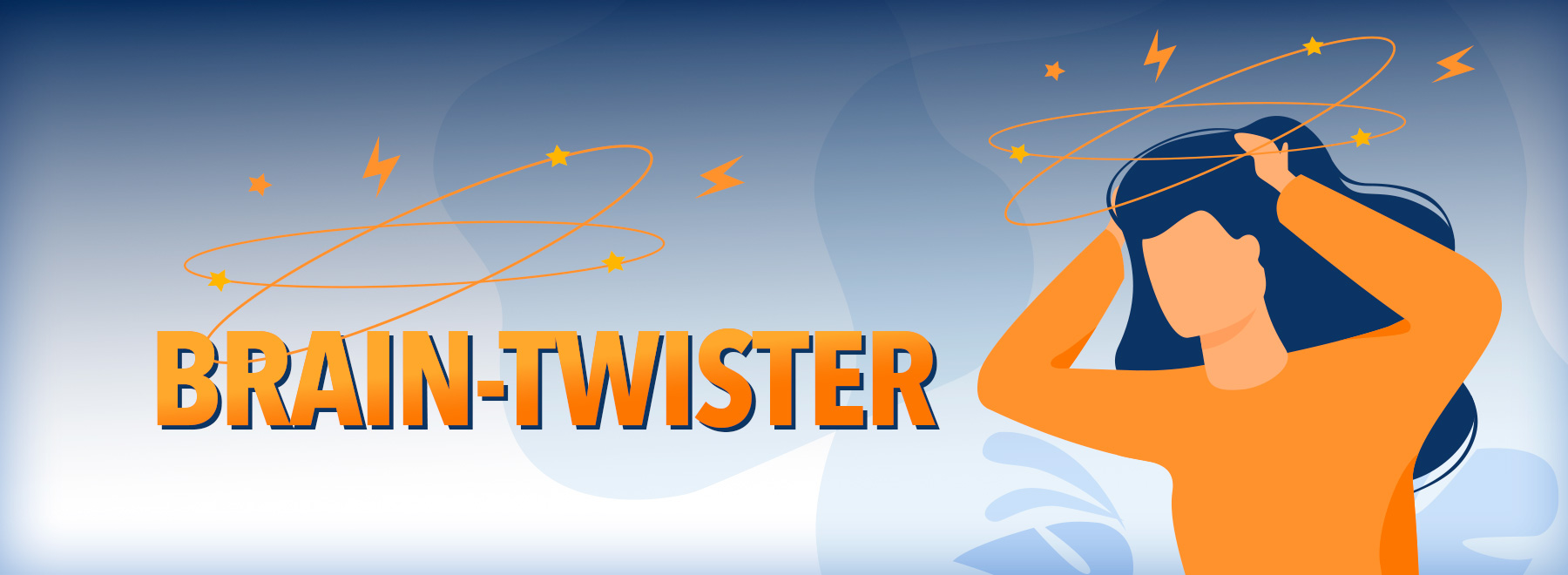When does a headache portend a tumor?
Sen. John McCain; U.S. Sen. Edward Kennedy; President Joe Biden’s oldest son, Beau; attorney Johnnie Cochran; Major League Baseball stars Tug McGraw, Darren Daulton and Gary Carter, among many others.
Those are just some of the high-profile figures who have succumbed to a deadly brain tumor called glioblastoma.
Naturally, then, the word “glioblastoma” might be implanted uncomfortably in many an American’s brain – even though the disease it names is not likely to follow suit.
It is important to recognize, however, symptoms that could be cause for worry, and experts at the University of Mississippi Medical Center can offer guidance.

“In my experience, the overwhelming majority of headaches are not caused by brain tumors,” said Dr. Mark D. Anderson, associate professor of neurology at UMMC. “When people do have a brain tumor, about half of those patients experience headaches.
“But I would be most worried with a patient who reports headaches with specific red flags, because I know how important it is to detect tumors early.”

Roughly half of all brain tumors found in the brain do not originate in the brain, said Dr. Muhammad Omar Chohan, associate professor of neurosurgery, neurology and radiation oncology at UMMC.
“Instead, those are cancers that spread from other organs, such as breast, lungs and so forth.
“Primary brain tumors are, on the other hand, very rare. These tumors arise in the brain or spinal cord, and they typically do not metastasize outside of the central nervous system.
“Primary brain tumors either arise from the covering of the brain, called meningiomas, 80 percent of which are benign. Rarely, though, as in the case of glioblastoma, these tumors can arise from the brain tissue itself.
“Such tumors, commonly referred to as gliomas, can range from slow-growing to very aggressive tumors.”
So, yes, it’s probably just another headache; but here is what happens when it’s not: “If you have headaches that wake you up from sleep, or from changing positions in bed, or from sneezing, coughing, bearing down for a bowel movement — any of that might be a sign that something is causing increased pressure,” Anderson said.
“If this is the worst headache you ever had, or you’re having headaches that won’t resolve, day to day, or have headaches that come on suddenly, or a new type of headache different from headaches you have had in the past, you should get it checked out.
“The pain receptors are in the lining of the brain, not inside the brain itself. So, for a tumor to grow big enough to cause pain, it has to get fairly sizable. It can also cause disruptions to spinal flow and cause a build-up of spinal fluid, which increases pressure that way.
“Another common symptom is a seizure.”
If the seizure is a first-time event for the patient, Chohan considers that a brain tumor – “until proven otherwise,” he said.
“It is often the first symptom of a brain tumor for an adult who has never had one,” Chohan said. “You have to prove that nothing else is going on in the brain.”
That may call for a CT scan or an MRI, Anderson and Chohan said.
“Other symptoms of brain tumors depend on where they are,” Chohan said. “For example, one specific location is the part of the brain involved in language, such as speaking, or understanding what we hear or read. Areas like these, which have a well-defined function, are also called eloquent areas.
“This is really expensive real estate in the brain. Tumors in eloquent areas can be caught early since they are likely to produce noticeable symptoms, but some tumors are in relatively silent parts of the brain. They can grow to a large size until they become symptomatic.”
In his own practice, Chohan has seen some sizable tumors.
“Oftentimes, family members will report subtle changes in personality or even an odd behavior that had been going on for a while, but was brushed aside,” he said. “Tumors in the frontal lobe will present with these personality and cognitive changes that can go unnoticed for a long time, allowing tumors to grow to a large size.”
When tumors grow large enough, with a lot of swelling, nausea, vomiting, imbalance may occur, in addition to headaches, Chohan said.
“Sometimes, it can look like a stroke; a lot of times people go to the ER.” But a scan may reveal it’s not a stroke, but a tumor.
“Some tumors are slow-growing, allowing the brain to accommodate to the size of the tumor until it can no longer adapt,” Chohan said. These slow-growing tumors have the potential to become malignant — the kind diagnosed for McCain and other well-known patients.
“Other tumors, like glioblastoma, are aggressive from the get-go; the brain doesn’t have time to adapt, so they become symptomatic early on,” Chohan said.
Regardless of a glioblastoma’s rarity, no symptoms should be discounted, considering what’s at stake, Anderson said.
“Web searches and medical AI [artificial intelligence] will not take the place of seeing a medical professional, because it’s difficult to know whether it’s a tumor or something else.”
With younger patients — those with many years ahead of them, who have a small tumor, Chohan is more likely to remove it right away.
“For an older patient with a benign-looking tumor and who is not symptomatic, I might just follow it — depending on the patient’s health, risks of surgery, and so forth,” Chohan said.
Several treatments are available. These include open surgery, minimally invasive surgery, laser ablation, as well as a type of radiation therapy called gamma knife surgery.
“During laser ablation, or LITT, we use a robot to place a tiny wire in the tumor,” Chohan said. “We then use MRI guidance to ablate the tumor; most patients go home the following day.
“Some tumors are removed while the patient is awake, thus preventing injury to eloquent areas.
“You can mix and match therapies. The beauty of being at the University Hospital is that we offer multi-disciplinary care. Our exceptional nurse coordinators help patients navigate complexities of care.
“This is really where a large academic medical center like UMMC really stands out. It means having access to the latest and most advanced technology in diagnosis, medical, surgical or radiation treatment of brain tumors.”
— — —
UMMC Neurosciences offers specialty care from highly-trained neuro-oncologists, radiation oncologists and neurosurgeons. More information can be found here. For appointments, go here, or call 601-984-5500 or 888-815-2005.
The above article appears in CONSULT, UMMC’s monthly e-newsletter sharing news about cutting-edge clinical and health science education advances and innovative biomedical research at the Medical Center and giving you tips and suggestions on how you and the people you love can live a healthier life. Click here and enter your email address to receive CONSULT free of charge. You may cancel at any time.



